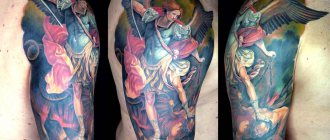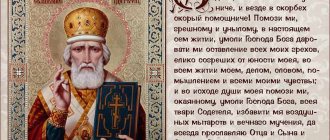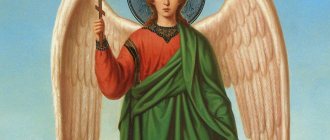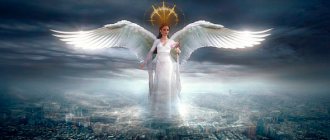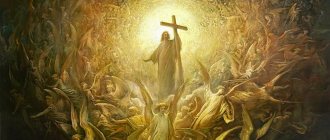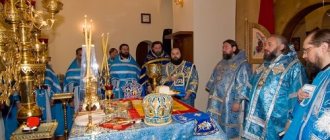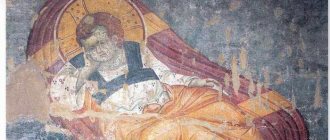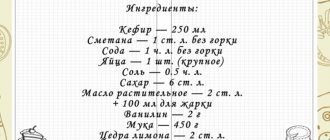Heavenly angels
Angels live in subtle worlds and do not have a dense body. Moreover, their capabilities are much higher than human ones: these creatures, possessing a higher intelligence, can monitor the material world, and sometimes even correct the course of events. Essentially, they are intermediaries between God and people, between the spiritual and physical world.
Angels are invisible to the ordinary human eye. However, sacred texts contain a lot of evidence when an angel appeared before a righteous person or saint to convey to him the command of God.
Angels represent two elements: air and fire. With the help of fire, they punish sinners or cleanse their souls from filth. Air symbolizes the lightness and purity of the innocent angelic soul, as well as flight as the fastest way to travel.
The word “angel” itself comes from the ancient Greek word, which is translated as “messenger”, “messenger”. Angels in the minds of most people are beautiful creatures in long white robes, symbolizing purity, and with wings on their backs.
The inhabitants of the heavenly spheres have different tasks, each group of angels performs its own function. Some are busy creating galaxies, others are responsible for individual planets, and others are focused on the evolution of living beings. Theologians claim that every person living on Earth has his own guardian angel.
Ministry of Angels
As already indicated, the word Angel does not indicate nature, but service. What is the essence of this ministry? Based on the Holy Scriptures, we can say that the angelic ministry is twofold and consists in glorifying its Creator (Is. 6:3), communicating God's will, helping or punishing a person or community (Job 1:6; Is. 6:72; Sam. 24:16; Dan. 8:16-26; Job 12:12; Luke 22:43; Rev. 5:8; Matthew 16:27, etc.
The number of Angels is not directly indicated in the Holy Scriptures. All the holy fathers, with the exception of St. Gregory of Nyssa, they said that although this number is unknown, it is stable, that is, from the moment when the angels were created by God, their number remained unchanged.
Holy Fathers - St. Gregory of Nyssa, St. Cyril of Jerusalem - in the Gospel parable about one lost sheep (Matthew 18:12), for the sake of which the owner leaves 99 and goes to look for her, they saw an indication of the numerical ratio of Angels (99) and the human race (one lost sheep), thus concluding that the number of Angels is incomparably greater, but it is impossible to determine their specific number.
Nine ranks
Hierarchy is necessary to maintain life in the Universe. And in our world everything is built according to the principle of hierarchy: the solar system, human society or an anthill. It is worth remembering that physical reality is a projection of higher dimensions. This means that the earthly hierarchy repeats the divine system, although the imperfect human mind introduces its distortions.
The heavenly kingdom was created as a coherent system, where each element plays a specific role determined by divine design. This creates harmony in the universe. If order is disturbed, chaos arises, leading to death and destruction.
God created a system of clear distribution of functions so that creation would be perfect. Lucifer was cast out of heaven because he violated the established order and wanted to live by his own rules, throwing aside divine laws.
Christian theologians identify nine ranks in the heavenly hierarchy, distributed into three groups. These ranks, otherwise called steps, were described by many Christian authors, including John Chrysostom, Thomas Aquinas, Bonaventure and Dante Alighieri.
Although there is some disagreement, most theologians adhere to a system that includes three groups of angels. In some systems, the name sphere, circle or triad is adopted (since each group is represented by three types of angels).
Mentions in holy books
The Bible mentions angels in both the New and Old Testaments. However, there is no detailed story about how they live and what they are like. Old Testament angels often appeared to the righteous and prophets, both in dreams and in reality, to give the necessary advice or warn against misfortunes. The Old Testament also mentions a fallen angel who fell into the sin of pride and was cast out of heaven by God himself.
The New Testament also speaks more than once about angels. An impressive-looking angel with fiery legs and a rainbow above his head appeared to the prophet John the Theologian to tell about future events and about the Apocalypse and the Last Judgment. When Jesus Christ was asked a question about angels, he answered that they do not get married, but are with God in heaven.
Even more information can be found in Judaism. The Tenakh (the Hebrew Bible) mentions the names of angels and archangels. The most important of them are Raphael, Gabriel and Michael. In the apocrypha of the Old Testament, the Ethiopian Book of Enoch, there are also references to angelic beings. Jews believe that God entrusted the protection of the four cardinal directions to his main archangels - Michael, Gabriel, Oriel and Raphael.
Christian angelic hierarchy
Let us consider in detail the system adopted in Christianity. Each sphere (triad) represents a special type of angels. The first sphere includes the immediate environment of God. The second triad is represented by beings responsible for the structure of the Universe and maintaining divine order. The third group includes angels who are connected directly with people.
First sphere
The triad includes: seraphim, cherubim and thrones.
- Seraphim are the creatures closest to the Lord. The name comes from the Hebrew word for “flaming.” This is exactly how the biblical prophet Isaiah saw them. According to the prophet, the seraphim had six wings. Saint Dionysius the Areopagite placed the seraphim in first place in the hierarchy and pointed out their fiery love for truth and light.
- Cherubim are on the second level after seraphim. According to theologians, cherubim embody divine wisdom. Their goal is to pass on this wisdom to others. In the text of the Old Testament there is a cherub with a fiery sword, guarding the entrance to the Garden of Eden. The Israeli king David mentions that cherubim served as a means of transportation for the Lord. Therefore, in the Bible, in relation to the Almighty, the phrase “sitting on cherubim” is often found. There is disagreement about the origin of the word. According to the Talmud, the name comes from Aramaic and means “like a youth.” Other researchers are inclined to the Assyrian version, according to which cherub means “praying, blessing.”
- Thrones are angels surrounding God seated on the throne. In Orthodoxy they are also called God-bearing. However, this expression should be understood not literally, but in a figurative sense. They carry God within themselves and serve him faithfully. In addition, these creatures carry an evolutionary beginning, expressing the providence of God.
The mystic Jan van Ruysbroeck, who lived in the Middle Ages, wrote that the angels of the highest triad never interfere in conflicts that arise between people. But if a believer turns to the Creator with prayer, remains in a state of grace, strives for the Truth, then at these moments seraphim, cherubim or thrones are next to him. They are the ones who instill the highest love in people's hearts.
Second sphere
The second sphere includes: domination, strength, power.
- Dominance. They interact with earthly rulers, who must be exponents of the will of the Almighty. Angels instruct government officials, teach them wise management, and help restrain anger and other sinful feelings. Dominations are also exponents of free will. They are the ones responsible for raising angels at lower levels.
- The powers are a class of angels who can give a righteous person supernatural abilities, such as the gift of clairvoyance or healing the sick. They were the ones who helped Jesus Christ perform miracles to reveal the glory of God the Father. Also, the task of these creatures is to support a person in moments of despair and provide energy replenishment to overcome everyday adversity.
- Authorities occupy a special position in the triad. They are entrusted with an important task: to resist the devil and his retinue. The authorities can prevent demonic machinations and protect people from the influence of dark forces. These creatures help fight various temptations and suppress sinful impulses. They protect the righteous from the attacks of demons, showing the way to the kingdom of God. At the moment when a person is overcome by temptations, these angels come to the rescue in the fight against evil.
Third sphere
The third circle is represented by the principalities, archangels and angels.
- Elements - this is the name of the angels responsible for managing the Universe and preserving everything that was created by the Creator. They have a wide range of interests, from the movements of the planets to weather phenomena. In addition, they send divine revelations to people, contribute to the development of religions and the spiritual growth of humanity.
- Archangels, otherwise the main angels. They can be called heavenly mentors, since they convey to people knowledge received directly from God. Thanks to the archangels, great prophecies and texts of the Holy Scriptures have come down to us.
- Actually, the angels are closest to us. They are always nearby and guide you on the path of virtue. The angels of this triad act as guardian angels. They are always ready to help, just turn to them in prayer. Angels closely monitor a person’s actions, protecting his soul from the attacks of dark forces and supporting those who accidentally stumble.
Why does God need angels?
Priest Alexander Satomsky helped explain complex questions about angels
Everyone has a life partner
“The deistic thesis is now fashionable: “Do you really think that the Creator of the world cares whether you feel bad or tolerable, what you worry about, what you want? God is doing more important things."
But God answered this question when there was no sign of deism - by creating for each person, regardless of faith or unbelief, a personal guardian angel. And then in the Gospel he added that “not a single hair from a person’s head will be lost without the will of the Heavenly Father” (Luke 21:18), explains priest Alexander Satomsky.
— People who are far from Christianity can notice this: there are so many humanly completely incomprehensible cases of salvation in some special circumstances. A believer will say: “The guardian angel saved me,” and an unbeliever, “I was born in a shirt.” But the essence is the same: God protects man so reverently that he assigns a companion, a co-worker who helps us and protects us.”
The theme of the participation of angels in people's lives is very developed in stories about saints. There, the guardian angel is simply a participant in everyday life. And he will advise, and help, and convict, if necessary, and arrange a check, so that the saints do not think to themselves that they are saints.
One old desert father, who had fallen and was caught between the beams, was found by a disciple, helped to free himself and asked: “Father, if I had not come, who would have freed you? – What is a guardian angel for? He would help me. - answered the old man.”
And another one, coming from the sun-scorched garden to the cell, the angel did not let him in, but stood menacingly in front of the entrance. The Holy Father immediately understood the hint and only asked: “For what guilt?” The angel explained, the elder repented.
“An angel who accompanies a person throughout his life will not leave him even at the hour of death. John of Damascus said that angels manage our affairs and help us, that is, they accompany us in our everyday worries. At the same time, it is important to know that although the angels themselves have some power, they can only do what is commanded by the grace of God,” adds Father Alexander.
It is also important to know that if a person does not want to, the angel will not come close, he is not a special forces security guard. Free - freedom. Unless, of course, there is an accident, emergency or other unplanned disaster.
“Not only every person has guardian angels, but also, by the grace of God, every nation, regardless of whether they are Christians or not,” notes Father Alexander, which is very important and unknown to many.
— For example, Israel believes that the Archangel Michael protects him. And the Fathers of the Church believe that now Archangel Michael is the patron of the new Israel, that is, the Church.”
Angels are individuals
On the left is an Angel in a tunic and himation, a fragment of a Byzantine mosaic in the monastery of Daphne, 12th century, Greece.
On the right is the Archangel Gabriel with a labarum, Byzantine mosaic of the Cathedral of Martorana, 12th century, Sicily “If only because in Scripture they are mentioned by name: Archangel Michael, Archangel Gabriel. This speaks of their uniqueness and individuality.
Some fathers believe that angels are incorporeal, i.e. do not have a body like us, and some think that they are immaterial at all. For example, Saints Theophan the Recluse and Ignatius Brianchaninov argued about this in absentia. The latter expressed the opinion that angels have some materiality, and Saint Theophan - that they are certainly incorporeal and do not possess materiality (at the same time they can take on some form, for example, appearing to people).
Other fathers call angels “smart power,” that is, they believe that the nature of angels is a free mind, pure consciousness, not bound by matter.
For example, Archangel Michael is an intelligent force that does the will of God; the devil (fallen angel) is a mental force that opposes God.
In general, it is customary to consider angels to be outside the human species and any species in general, and only situationally during the execution of an order, delivering a message (“angel” from the Greek ἄγγελος - messenger) of God can they appear in a human (or other) form , because they are in space-time, that is, in the dimension in which a person lives.
For example, Scripture says that Satan can take the form of an angel of light, that is, a form that is not characteristic of him and is not natural at this stage in human history, but the Bible says nothing about this,” comments Fr. Alexander Satomsky.
Order in Heaven
Fragment of the painting of the Cathedral of the Nativity of the Virgin Mary at the Ferapontov Monastery.
From left to right - Archangel Gabriel, Archangel Michael, Archangel Uriel, unknown archangel. Dionysius, 1502. In addition to the famous angels, Michael, Gabriel, there are also completely mysterious heavenly ranks: seraphim, cherubim, thrones, dominions, powers, authorities, principles. Why is it given to a person to know about them if it is not expressed, not represented in people’s lives? The attempt to present and express the “known” about angels, made by Dionysius the Areopagite in the 5th and 6th centuries, is today perceived critically by progressive theology.
Father Alexander: “For example, from the point of view of the Areopagite, people can only interact with angels, with the ninth rank, but in Scripture we see that Seraphim descends to the prophet Isaiah (Isaiah 6:6), that archangels appear to people.”
On the left is the Cathedral of the Archangel Michael and other ethereal Heavenly Powers. (Novgorod icon, end of XV). On the right is Seraphim, a fresco in the Hagia Sophia. Istanbul
Everything about angels is known only to God. And God is accustomed to creating everything “good,” which in human translation means cosmically harmonious, orderly, reasonable (from the word “logos”). The angelic ranks hint at this heavenly harmony, reminding man of what he himself is not alien to the spirit of God.
“The angelic nature, unlike ours, tends to be transparent to God, never to remain in itself, but to abide only in God.
The Church gives them a name: “second lights.” This is because their nature is, as it were, “second,” that is, light pouring out from God’s Light, from God. And God is love.
That is why, in their complete transparency for God, and as if reflecting God in their nature, angels in their essence, in their nature, are love. And they gather into their cathedral, forming a kind of spiritual whole, by the power of love,” said Archpriest about the angels. Vsevolod Shpiller.
And perhaps the angelic world was created by God, among other things, for the sake of man and for man. So that a person can see: the world is not a jungle, there is a world in which creatures love God and each other. And no Satan will stop them.
What do Tolkien's elves talk about?
Fragment of the painting “Angel (Angel Prelude)”.
Mikalojus Čiurlionis, 1909. M. K. Čiurlionis National Art Museum. Kaunas, Lithuania The world of elves, fairies, Merlins and other artistic characters of Tolkien speaks of certain ancient times, similar to biblical times, when “there were giants on the earth” (Gen. 6:4). And the saint and teacher of the Church Basil the Great, when asked whether there was something before the earth and the world of people on it, answers, in general, in the affirmative:
“There was something, most likely, before this world, but although it is comprehensible to our understanding, it was not introduced into the narrative as it did not correspond to the powers of the newly taught and infants by reason.”
Authorities. 13th century mosaic, Baptistery of San Giovanni. Florence, Italy
“Such an opinion in the Church is called a theologumen, or private theological opinion,” explains Fr. Alexander, - and there is no sin in accepting these opinions or not. But this is not the opinion of the entire Church.” And yet, such a co-direction of the theologumen of St. Basil and Tolkien’s intuitions on the topic is pleasant - what happened before, in ancient times!
So the later holy fathers were no stranger to reflecting on paratheological topics, “for example, St. Theophan the Recluse in his works theologizes on topics from the natural sciences: is life possible outside the Earth and is it possible as intelligent life,” clarifies Father Alexander.
— The Bible doesn’t say anything like that about ancient times. Although it has many comments on these mysterious topics. But the commentary is not the Bible itself. The Bible is a text about man and addressed to man. Like Lewis in The Chronicles of Narnia, Aslan says: “I tell everyone only his story.”
The Archangel of God Michael is an intelligent force that does the will of God
Appearance of Archangel Michael to Joshua.
Miniature. Minology of Basil II, 10th century Archangel Michael, together with Archangel Gabriel, are the most famous angels to people. “If we talk about the appearance of the Archangel Michael to people, then one of the most striking references to this is found in the book of Joshua (Joshua 5:13-16). Before one important battle, when Joshua seeks help and a sign from God, Archangel Michael shows him such a sign and gives him help.
On one of the icons where this event is written, the kneeling Joshua is shown at the feet of the Archangel Michael, who is several times larger than him. Here the emphasis is placed on the fact that the earthly commander and the leader of the Heavenly forces met.
Not all the stories about the Archangel Michael that we know from Church Tradition, iconography, and liturgics are contained in the Holy Scriptures. But this one is definitely contained: the apostle wrote in the Council Epistle about the confrontation between the Archangel Michael and the devil over the body of the prophet Moses. Jude (Jude 1:9).
The devil wanted the burial place of the prophet to be known and to become a cult, a shrine in itself, not connected with God.
But in the end, Moses was buried on Mount Nebo, in an unknown place on it. It should be mentioned here that many saints asked for a secret burial.
The meaning of the words up. Jude in this letter is about the dangers of slander, about the fact that even in this case, the Archangel Michael did not blaspheme the devil, but said: “The Lord rebuke you.”
The White Angel is a fragment of a fresco from the Church of the Ascension of the Orthodox Monastery Milesheva. Early 13th century, Serbia
The Apocalypse also speaks of Michael (he is not called an archangel here), acting as the main opponent against the devil in the form of a dragon, and the fallen angels who listened to him: “And there was war in Heaven: “Michael and his angels fought against the dragon, and the dragon and the angels they fought against them, but they did not stand, and there was no place found for them in Heaven. And the great dragon was cast out, the ancient serpent, called the devil and Satan.” (Rev.12:7-9).
The book of the prophet Daniel (Dan.10) speaks of the help of the Archangel Michael to the people of God during the time of the Antichrist: “And at that time Michael will arise, the great prince who stands for the sons of your people; and a time of trouble will come, such as has not happened since people existed until now; But at that time all of your people who are found written in the book will be saved” (Dan. 12:1).
Archangel Michael (from the Zvenigorod rank). Beginning of the 15th century. Andrey Rublev. State Tretyakov Gallery, Moscow, Russia
These biblical quotes, as well as the Tradition of the Church, became the basis for statements by the holy fathers on the topic of the overthrow of Satan by the Archangel Michael. For example, St. Gregory the Dvoeslov, and later St. Demetrius of Rostov, mentions the legend that the Archangel of the heavenly disembodied forces will participate not only in the eschatological battle of good and evil at the end of the world, but also participated during the fall of the devil at its beginning.
However, in their texts we do not see direct reasons for the fall of Satan. And since we do not find them in the Holy Scriptures, we must admit that before us is an area about which we cannot say anything unambiguous.
On the left is Archangel Michael with scales. Part of the altar polyptych “The Last Judgment”, Rogier van der Weyden, 15th century, Beaune, France. On the right - Archangel Michael defeats the devil. Raphael Santi, 1518, Louvre Museum, Paris, France
Archangel Michael is revered for the miracles he has performed throughout history and outside the context of biblical events. For example, a miracle in Khoneh in the 4th century, when the pagans planned to destroy a Christian temple with the help of a mountain river, and the Archangel Michael, with a blow of his rod, opened a cleft in the mountain into which water rushed, and the temple was preserved.
Or the wonders at the famous abbey of Mont Saint-Michel (Normandy, France), which stands in the tidal zone. The history of the monastery contains many evidences of how the Archangel Michael saved pilgrims who were delayed on their way from water,” explains Father Alexander.
Who came to Abraham when Sarah laughed?
Abraham and three angels. Marc Chagall, 1966. National Museum of Marc Chagall, Nice, France. ©Marc Chagall
The appearance of angels could frighten a person, like, for example, the prophet Zechariah, the father of John the Baptist. Or the myrrh-bearing women who came to the tomb of Christ and saw there not at all what they expected.
And the angels themselves do not always, let’s say, remain within the boundaries of the classic image. For example, “three men” came to Abraham (Gen. 18:1-3), about whom it is further said: “And those two angels came to Sodom in the evening” (Gen. 19:1). And the third angel turned out to be not an angel at all.
“Some ancient icons of the Hospitality of Abraham depict Abraham, Sarah and three husbands, one of whom has a baptized halo. It is implied that this is God the Word, and the other two are heavenly forces that only symbolize the trinity of the Divine, says Father Alexander.
— We see this through the continuation of the story: when two of the three men who appeared to Abraham ended up in Sodom, they ask Lot about those who still need to be saved and brought out of the city (Gen. 19:13), that is, they show ignorance. So these are angels, because... They, unlike God, are not omniscient.
One of these three husbands knows that Abraham’s wife Sarah laughed in thought; this one is the Lord - the only knower of the heart, to whom every human thought is open.
He stayed with Abraham when the other two went to Sodom, and Abraham prayed to Him to spare the city, bargaining over the number of righteous people needed for this. And when this dialogue ended, we read: “And the Lord departed.”
Werewolf angels or Cainites
Cain kills Abel.
Fresco in the Church of St. Nicholas, village of Raduil, Bulgaria Another mysterious place in the Bible (Genesis 6:1-2) speaks of certain “sons of God” who turn out to be werewolf angels:
“When people began to multiply on earth and daughters were born to them, then the sons of God saw the daughters of men that they were beautiful, and they took them as wives whom they chose.”
Father Alexander: “There are two authoritative versions of the answer to the question of who the “sons of God” are, both patristic. According to the first, the world that we know now is the world after the flood; before the flood, we are dealing rather with metahistory - the prehistory of the world known to us.
At this time, according to the Church Fathers, there was an intersection of two lines of humanity - the descendants of Cain and the descendants of Seth.
Cain, after killing his brother Abel and being expelled, goes to the land of Nod and founds a new civilization there, and invents musical instruments. Adam and Eve have other children, one of whom is Seth, whose descendants are called Sethites.
There was no communication between Cain, his descendants and the descendants of the other children of Adam and Eve due to the memory of the catastrophe.
But over time, there are more and more people, and a meeting between the descendants of Cain and the descendants of the other children of Adam and Eve takes place. This meeting is described at the beginning of the sixth chapter of Genesis. According to this version, the sons of God are most likely the descendants of Seth.
But mingling with the offspring of Cain - the “daughters of men” - they begin to gradually lose their aspiration for the heavenly, forget about their homeland - Eden and begin to perceive the existing world as the only possible reality.
Priest Alexander Satomsky
teacher of the department of theology of Yaroslavl State Pedagogical University, Yaroslavl Theological Seminary, branch of Leningrad State University. A. S. Pushkin, head of the Publishing Council and member of the Theological Commission of the Yaroslavl Diocese, rector of the Church of the Epiphany in Yaroslavl.
Judaic angelic hierarchies
Scholars of Judaism believe that many aspects of the Hebrew religion were borrowed from the mythology of Ancient Babylon. It was the knowledge of the Babylonian priests about the lower and upper spirits that formed the basis of the Jewish system of the world order. Subsequently, this system underwent evolution, but the principle of classification itself, implying ten levels of hierarchy, remained unchanged. Different traditions have their own order of angelic ranks. Let us take as an example the system described in the book “Mishneh Torah”.
- At the very top there are angels who are called “hayot ha-kodesh”. Translated into Russian, the term means “holy living creatures.”
- Next come ofanim (“wheels”).
- A step below are arelim (“valiant, courageous”).
- They are followed by hashmalim (“amber”).
- The name Seraphim means “flaming, burning.” Subsequently, it migrated to the Russian language.
- The group of malachim personifies “messengers, messengers.”
- The next step was named Elohim. This Hebrew word means "godly beings, gods."
- A step lower are the Bne Elohim (“sons of godly beings”).
- Kerubim (“like blooming youth”), in Russian this name sounds like “cherub”.
- Angels called ishim (“human-like”) complete the system.
Islamic angelic hierarchies
The Quran does not have a clear system defining the place of each angel in the divine hierarchy, but Islamic theologians still tried to build a system describing the relationship between Allah and his assistants.
- At the top of the hierarchy are mukarrabun (“close associates”).
- Then comes a group of angels standing around the throne of Allah. It includes four hamal al-arsh (“throne bearers”) and karubin (“those who are nearby”).
- Haphaza, they are also “protectors, guardians.” In this group, the angels have different functions. Some protect in difficult life situations. Others monitor a person's actions, recording his deeds and sayings in order to testify at the Heavenly Court.
- The task of the mudabbirat (“those who deal with affairs”) is to monitor the state of the world order and compliance with divine laws.
- The name mukkoshimat translates as “those who distribute.” These are a kind of dispatchers sending out orders from Allah.
- A separate detachment of angels is responsible for natural phenomena. It includes, in particular, zazhirat, which control the movement of clouds.
- The angels of the seven heavens operate in spheres associated with celestial bodies (Moon, Mercury, Venus, Sun, Mars, Jupiter, Saturn).
- There are angels whose task is to monitor the development of the child in the womb. They are called “angels of the womb” - malaikat al-arham.
- But the angels of death in the East are called malaikat al-maut. They extract souls from the bodies of the dead. Another group of angels guards the gates of hell and heaven.
- There is an army of Allah called Jundallah. By order of the Almighty, they help people in military operations. Of course, to do this you need to earn God's blessing.
- There are also helpers of Allah who are called tailat (the word means “those who read”). These creatures constantly remind believers of the wisdom of Allah.
- A detachment of sayyahuns (“travelers”) follows the pilgrims everywhere, protects and fulfills their requests.
Angelic hierarchy in occultism
Representatives of mystical and occult teachings largely rely on the generally accepted Christian classification of heavenly beings, but introduce changes. The British adept Francis Barrett, in his work “The Magician, or the Complete System of Occult Philosophy,” expanded the list of angelic orders to 12 positions, and the number of spheres to four. In the last group he included people canonized as saints. Its hierarchy looks like this.
First sphere:
- seraphim;
- cherubs;
- thrones.
Second sphere:
- domination;
- strength;
- authorities.
Third sphere:
- beginning;
- archangels;
- angels.
Fourth sphere:
- immaculate;
- martyrs;
- confessors.
